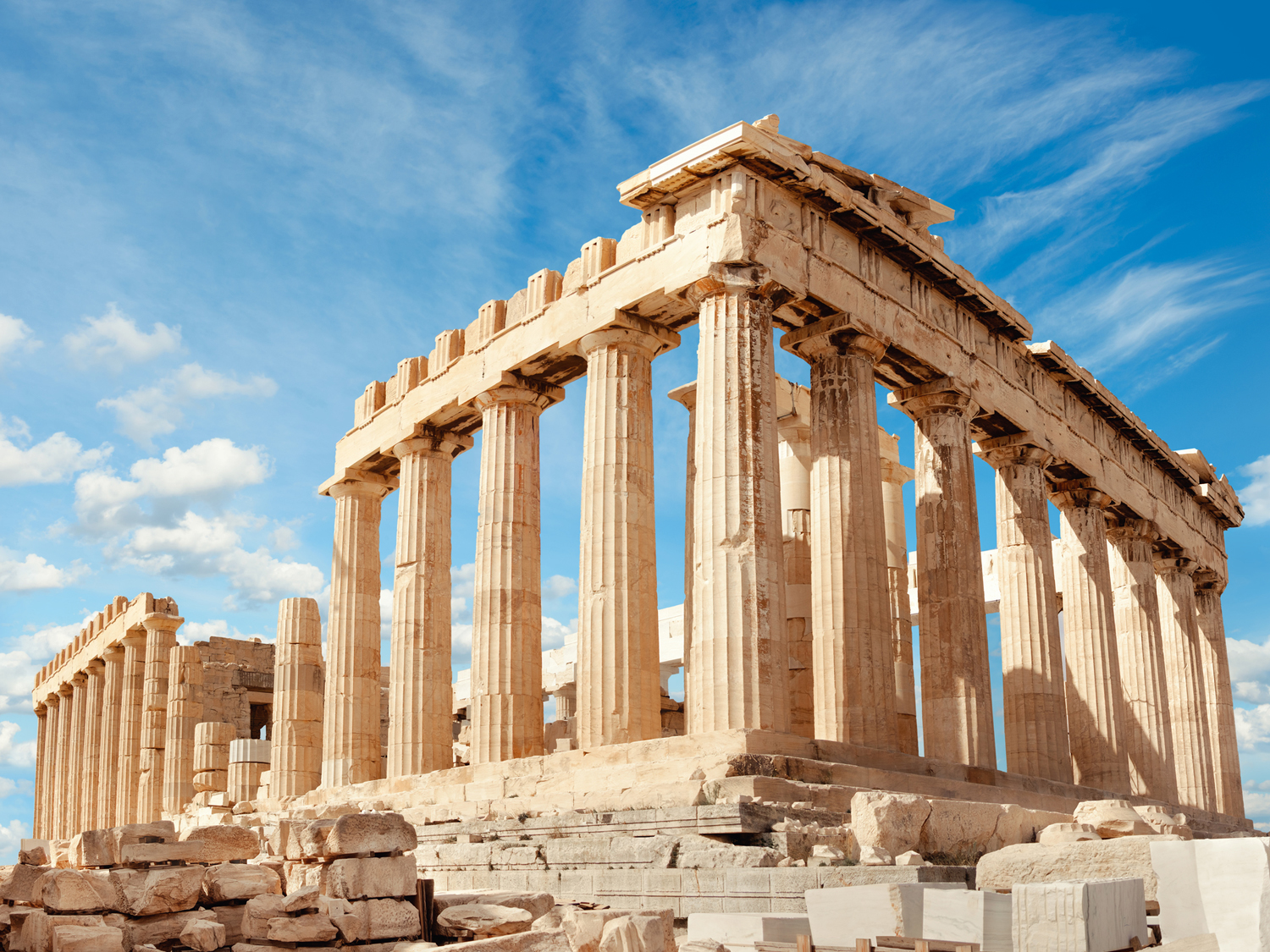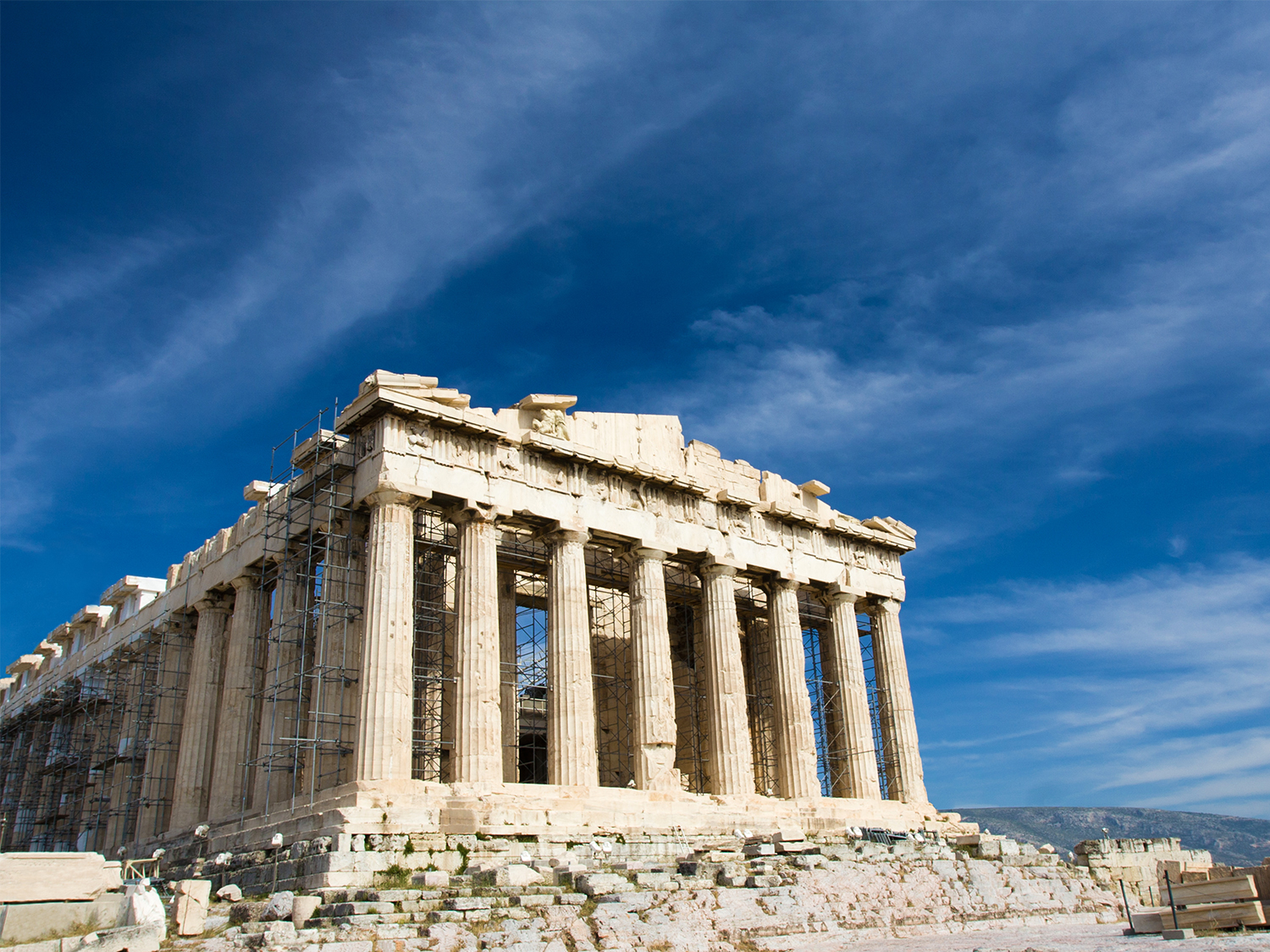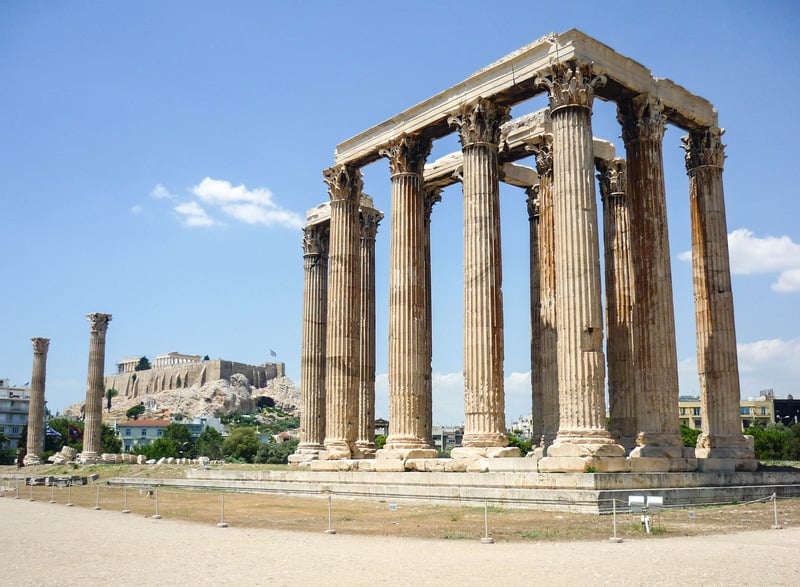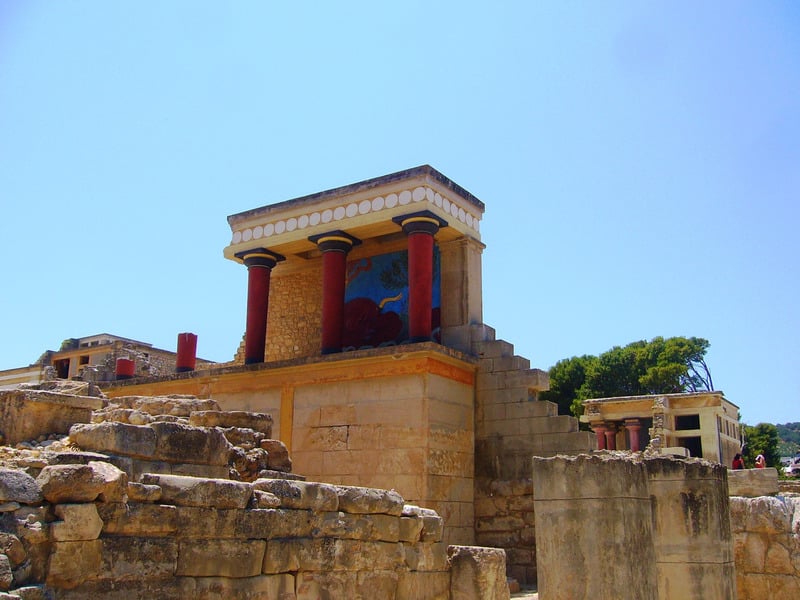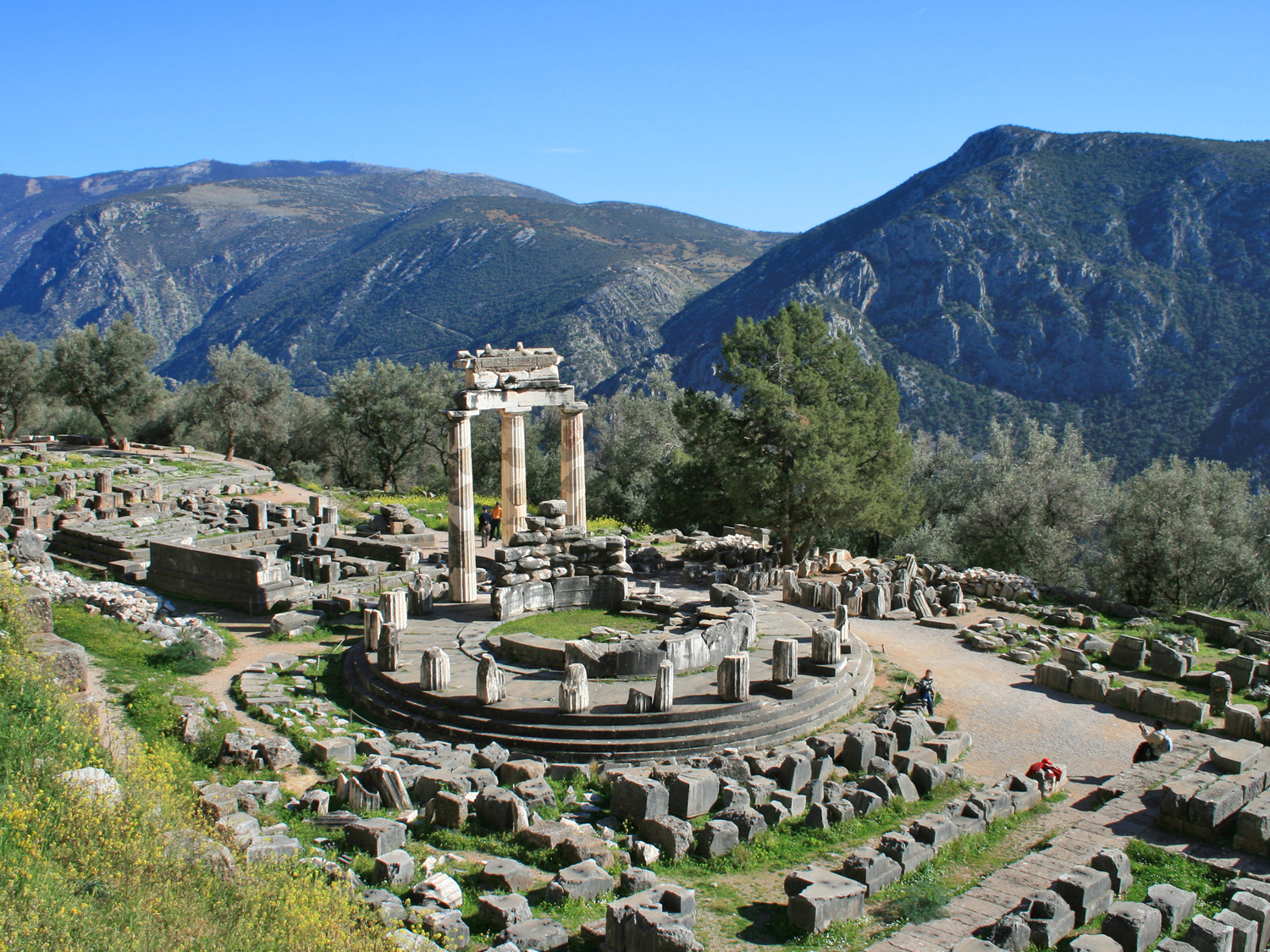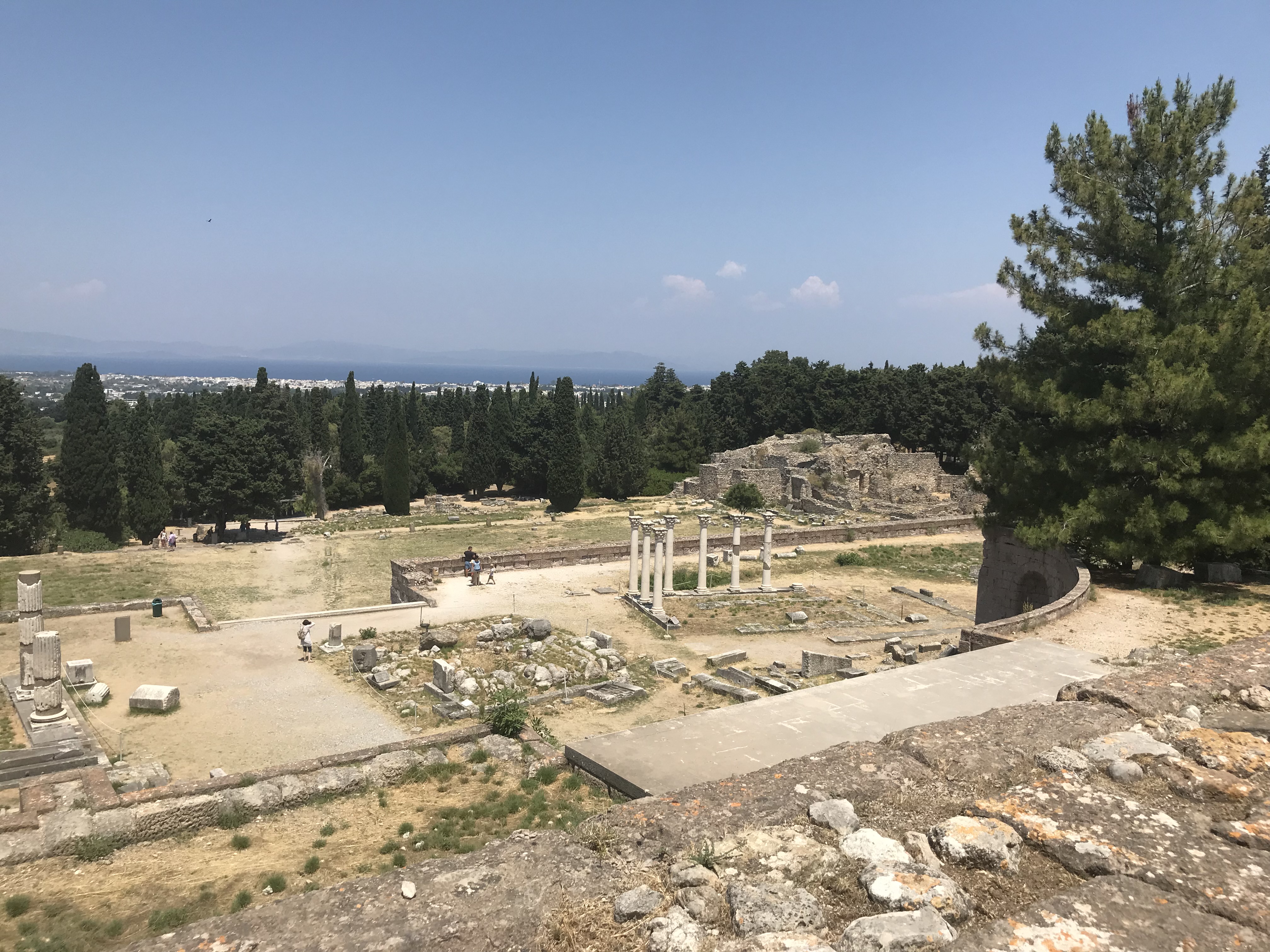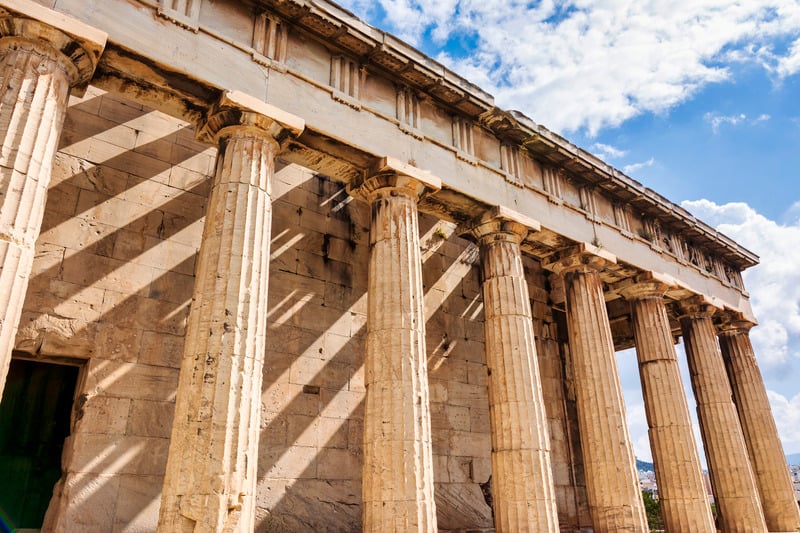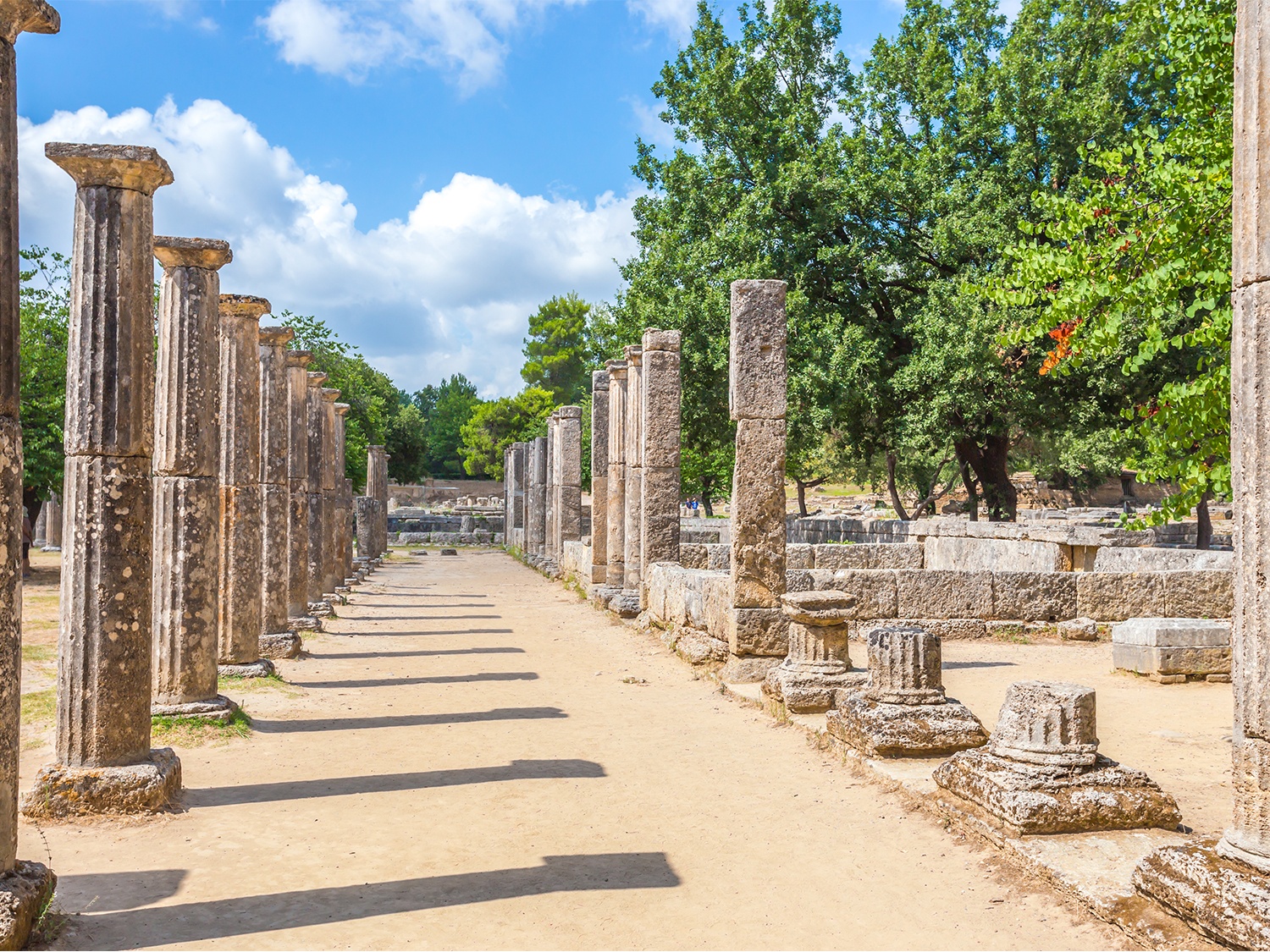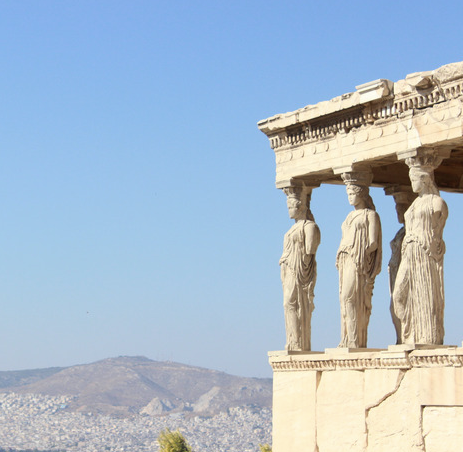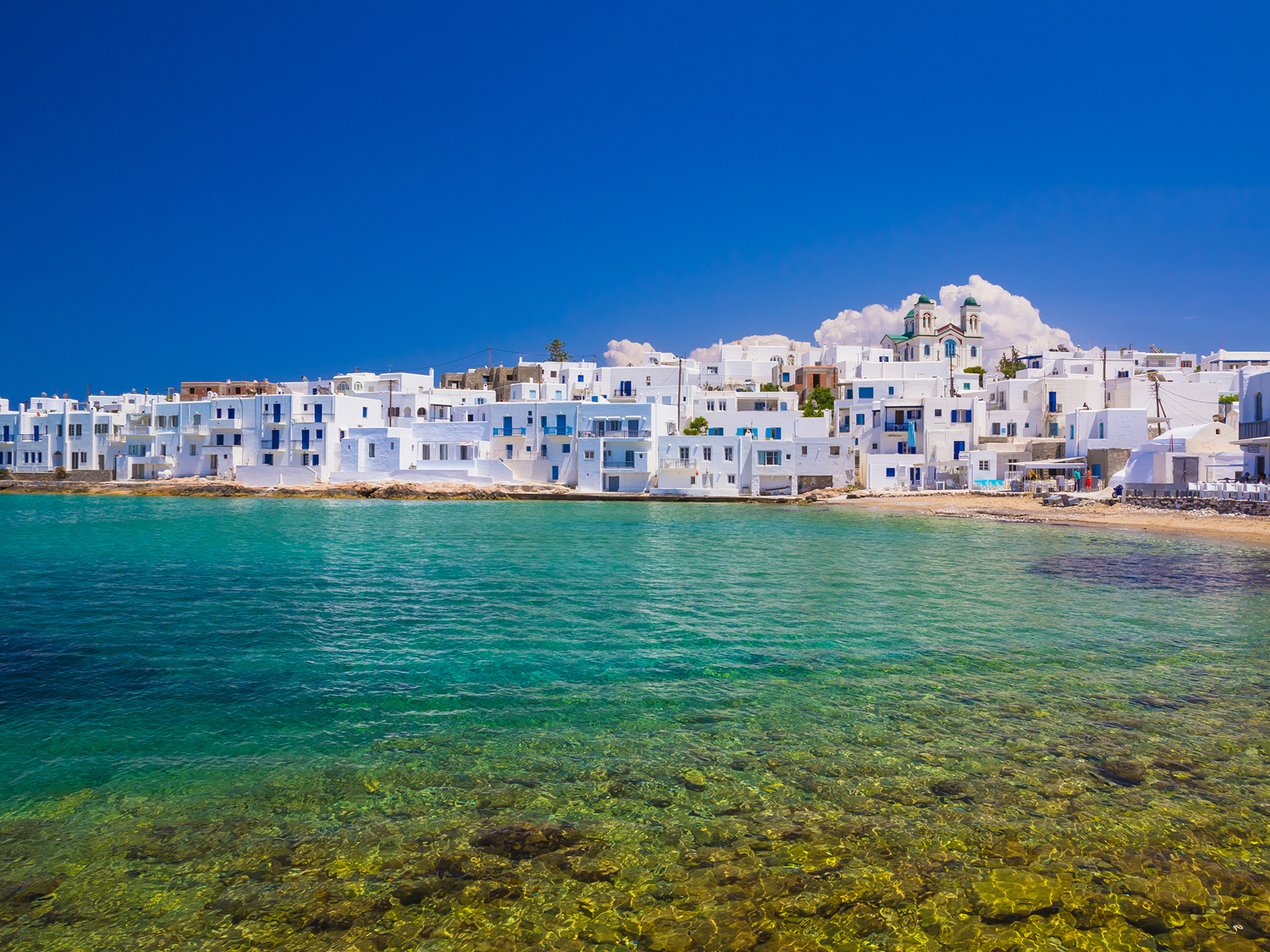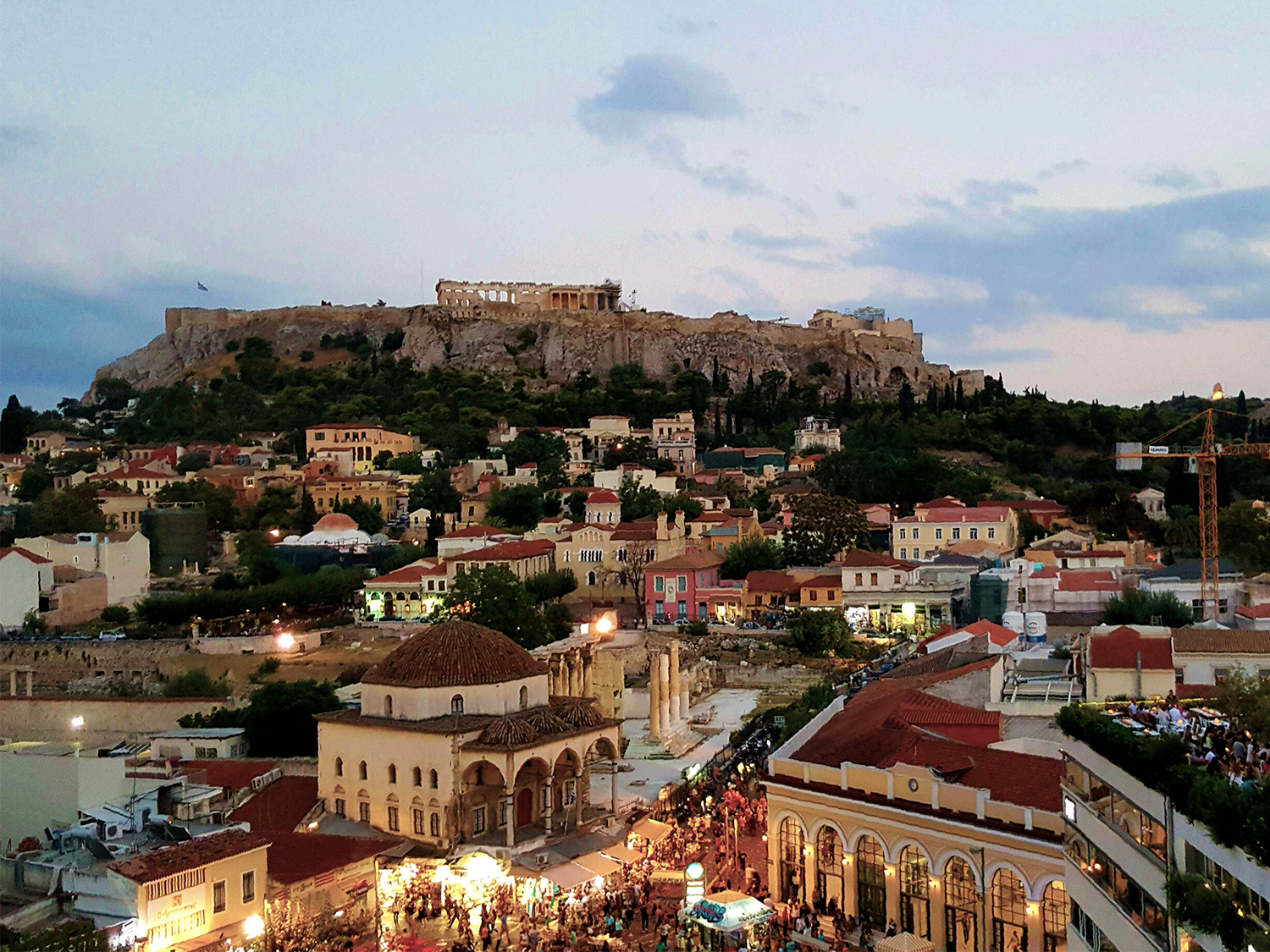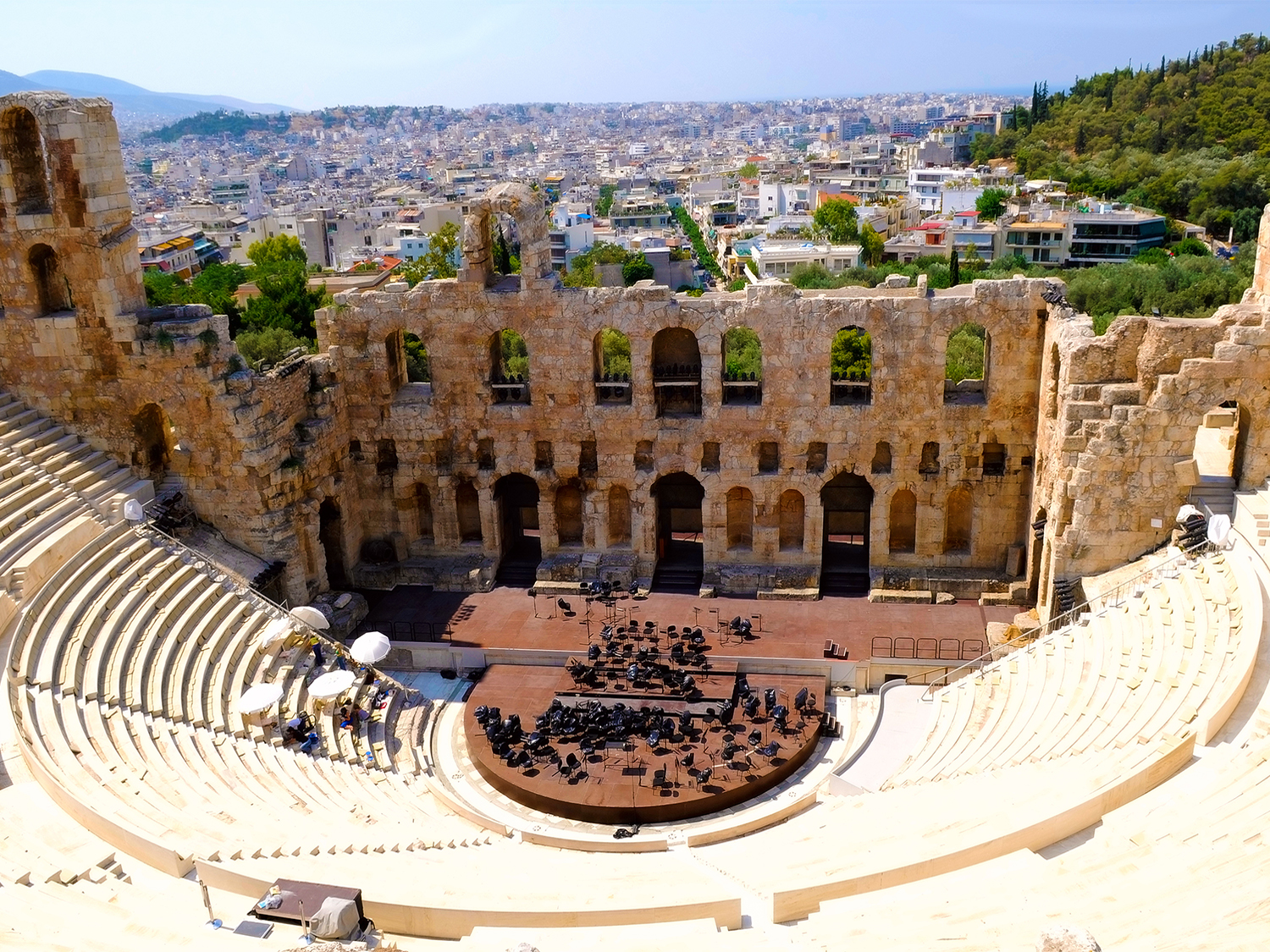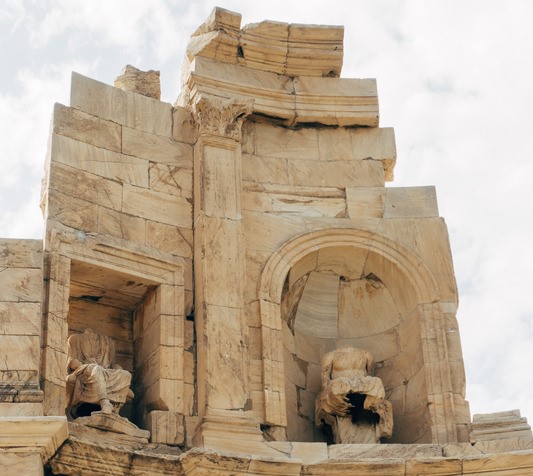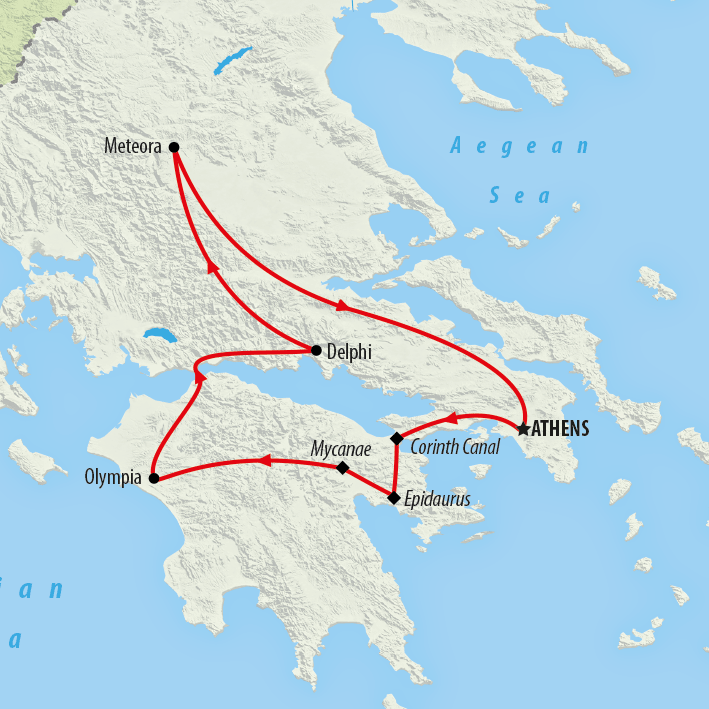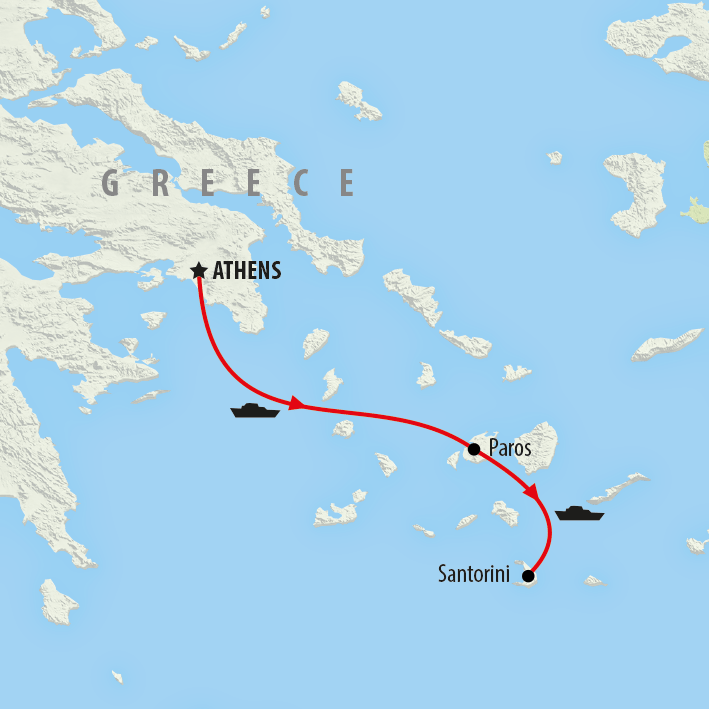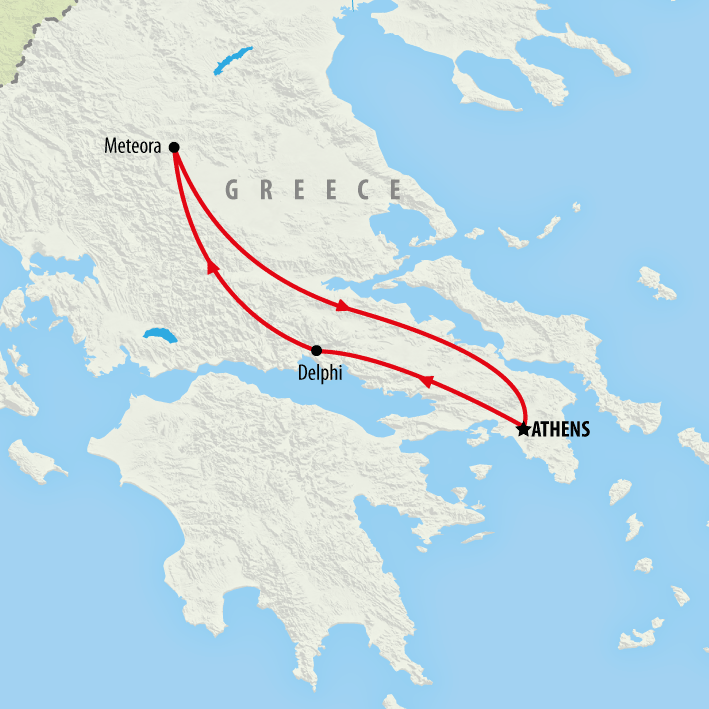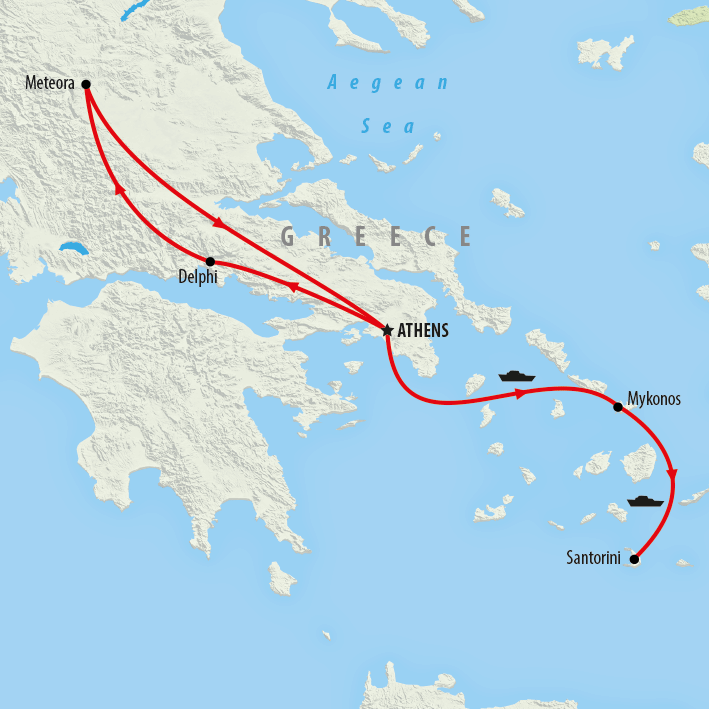Best Greek TemplesDiscover famous Greek temples on a guided tour.
When do you want to go?
2024
I'm flexible
Passengers
Adults (18+)
Children (0 - 17)
Best Greek Temples
Situated in the Southeast of Europe Greece is a country known for many things. Its warm sunny weather, its crystal-clear beaches and, of course, its deep rich history. Steeped in myth, legend and unparalleled historical significance the lives of the ancient Greeks have been studied for decades. Dotted across the country you will find ancient Greek temples that have miraculously withstood the test of time. Join us on one of our many Greek tours and experience famous Greek temples from the Zeus temple in Athens to Apollos temple on our Delphi Greece tours. We offer a range of Greek tours, from short stays to longer journeys, one thing you can be sure of is that no matter which of our Greek tours you choose you will always be immersed in history. From the world-famous Parthenon at Athens to the painted Palace of Knossos there are so many ancient wonders waiting for you to explore in the beautiful country of Greece! Since there are twelve Olympic Gods, we have made a list of twelve must see ruins on your tour of Greece.
The Parthenon
A list of the top ancient sites to visit in Greece would not be complete without the world-famous Parthenon. With its towering white pillars and hilltop location, the Parthenon is a historical marvel. Construction of the temple completed around 432 BC and throughout the Parthenon’s history it has been used as a place of worship for many different religions. The temple was originally dedicated to the patron goddess of Athens, Athena but since then it has been a Christian church dedicated to the virgin Mary and a Muslim Mosque when the Ottoman Empire seized Athens. Today the Parthenon sees visitors from every corner of the globe, eager to learn about its rich history and marvel at its classic Grecian architecture.
Temple of Zeus in Athens
A temple dedicated to the head of the Olympic Gods Zeus, this colossal temple was once the largest in all of Greece. The temple spanned a huge 100-by-50 metre area with 104 giant 50ft tall columns. Construction of the temple took over 600 years to complete and was finally finished during the reign of roman emperor Hadrian, who filled the temple with statues not only of Zeus but also of himself. Today only 15 of the original 104 columns remain standing but the colossal hight of the remaining columns and the grandeur of the surviving foundations will still leave you speechless.
The Palace at Knossos
A staple of the Minoan age the Palace at Knossos is synonymous with myths, history and Crete’s golden age. The palace is wonderfully preserved and includes many recreations to give visitors an idea of what the palace might have looked like in its heyday. Whilst there are rooms within the palace that archaeologists believe to be the residence of royalty the palace also has many rooms that are believed to have been used by craftsmen, traders and administrators, making the palace a societal hub for the residents of Crete. The palace is a great archaeological site to visit if you are looking for an immersive look into how the ancient Greeks lived.
The temple of Apollo at Delphi
The Temple of Apollo at Delphi holds deep importance in the history of ancient Greece. Home to the famed Oracle at Delphi, or Pythia, who was the high priestess at the temple of Apollo. The Oracle at Delphi was the most highly regarded oracle in ancient Greece and has been mentioned in many myths and literature from prominent Greek writers. The temple itself is located on Mount Parnassus offering beautiful views as well as the grand ruins of the temple. Follow in the footsteps of mythical heroes who made the journey to the temple searching for the oracle hoping to hear that their future was a heroic one.
The Asklepion in Kos
Asklepion’s were headlining temples, like the ancient version of a hospital, dedicated to the demi-god and doctor Asclepius. Known to be a doctor so skilled it was said he could raise people back from the dead. The most famous of these ancient hospitals is the Asklepion at Kos due to its link to the ‘Father of Modern Medicine’ Hippocrates. The ruins of this site are very well preserved, situated on a high hill filled with lush greenery. Be sure to climb to the top floor of the Asklepion for a stunning view of the sea and even catch a glimpse of Turkey across the water.
Temple of Hephaestus in Athens
One of the most well-preserved temples in Greece, the ancient Temple of Hephaestus, or The Hephaisteion, is a temple inside the ancient agora dedicated to the God Hephaestus. The temple remains almost entirely intact with 34 columns, a frieze depicting 9 of the 12 labours of Heracles and most of its original roof. The temple was converted into a Christian church around 700AD, which could play a part in why it is so well preserved, since it was consistently in use throughout history. In 1834 the temple was converted into a museum and stayed as one for 100 years after which it was classed as an ancient monument which could be expertly excavated and can now be explored by tourists.
The Temple of Zeus in Olympia
The temple of Zeus in Olympia was a large ancient temple, most famous for being home to one of the Seven Wonders of the Ancient World, a giant gold and ivory statue of Zeus. Standing at around 41ft tall the statute was a testament to the Greeks worship of the sky and thunder God. The town of Olympia held a festival for Zeus every four years, as part of this festival there were sporting events, and this would be the beginning of the Olympics. The custodians of the Olympics commissioned the famous Zeus statue for their newly built temple around 435 BC. The statue was built by Phidias, the same man who had made the giant statue of Athena Parthenos for the Parthenon, and it’s thought by historians that the statue was built to outdo their rival Athenians. Today the statue is long gone, and the temple of Zeus has been destroyed, however you can still see the ruins of the temple at Olympia and learn the history of the site.
The Erechtheion in Athens
One of the Acropolis’s many temples the Erechtheion, also known as the temple of Athena Polias, is a masterpiece of ancient Greek architecture. Located on the north side of the Acropolis, the Erechtheion was built in the 5th century BC. It is believed to have honoured both Athena and Poseidon. Its unique design features Ionic and Corinthian columns, with the Porch of the Maidens showcasing elegant female figures as columns. Despite damage over the centuries, its beauty and significance endure, captivating visitors with its rich history and architectural brilliance.
The Temple of Ekatontapiliani (Shrine to The Virgin Mary in Paros)
Also known as the Holy Shrine of the Virgin Mary, the Ekatontapyliani is a beautiful Byzantine church in Parikia Town in Paros. Dating back to 326 AD the church was reportedly founded by Saint Helena, mother of the Roman emperor Constantine the Great. Legend goes that she passed through Paros on a pilgrimage to the Holy Land and promised the Virgin Mary that if her pilgrimage was successful, she would build a church dedicated to her. With her pilgrimage being a success, she kept her word and built the Ekatontapyliani. The church is beautifully well preserved and still holds a festival every year on the day of the Dormition of the Virgin Mary.
Roman Agora
Nestled in the heart of Athens, the Roman Agora stands as a timeless testament to the city's rich history and cultural significance. Originally built in the 1st century BC, this ancient marketplace served as a hub of commercial activity and civic life during the Roman period. Today, visitors can wander among the well-preserved ruins, marvelling at the intricate architecture of the Stoa of Attalos and the imposing Gate of Athena Archegetis. The Roman Agora is a history lovers dream, explore the well-preserved ancient buildings and get a feel for what life was like in ancient times.
Odeon of Herodes Atticus
The Odeon of Herodes Atticus sits just beneath the Acropolis in Athens and is a timeless testament to ancient Greek architectural brilliance. Built in 161 AD by Herodes Atticus in memory of his wife, this ancient theatre once hosted dramatic performances, musical concerts, and poetic recitals. Its grandeur lies in its perfectly preserved semi-circular seating, crafted from marble, accommodating up to 5,000 spectators. Today visitors can still marvel at the majestic stage backdrop and imagine the applause that once reverberated through its walls. With the backdrop of the Acropolis, the Odeon of Herodes Atticus remains a must-see destination, inviting visitors to step back in time and immerse themselves in the cultural legacy of ancient Greece.
Philopappos Hill
Named after Gaius Julius Antiochus Epiphanes Philopappos, a prince of the Kingdom of Commagene, Philopappos Hill is famous for its grand mausoleum dedicated to Philopappos himself, and the breathtaking views of the Acropolis that you get atop the hill. As you ascend the gentle slopes, you’re not only treated to archaeological marvels but also to a tranquil haven where history, nature, and panoramic vistas come together, making Philopappos Hill an essential stop for any traveller seeking the soul-stirring remnants of Greece's illustrious past.
Conclusion
Greece is a country with a rich history that has captivated audiences for centuries. Our tours offer a range of experiences visiting many of these sites and more. Our Greek tours take you across Greece introducing you to stunning landscapes, delicious food and the many ancient ruins that are scattered across the country. Take a look at our Greece tours and see the ruins first hand.
Discover our best Greece tours
Book your next adventure today and see the famous ancient temples of Greece first hand!
Our customers say
Excellent
4.4 out of 5 based on 275 reviews
